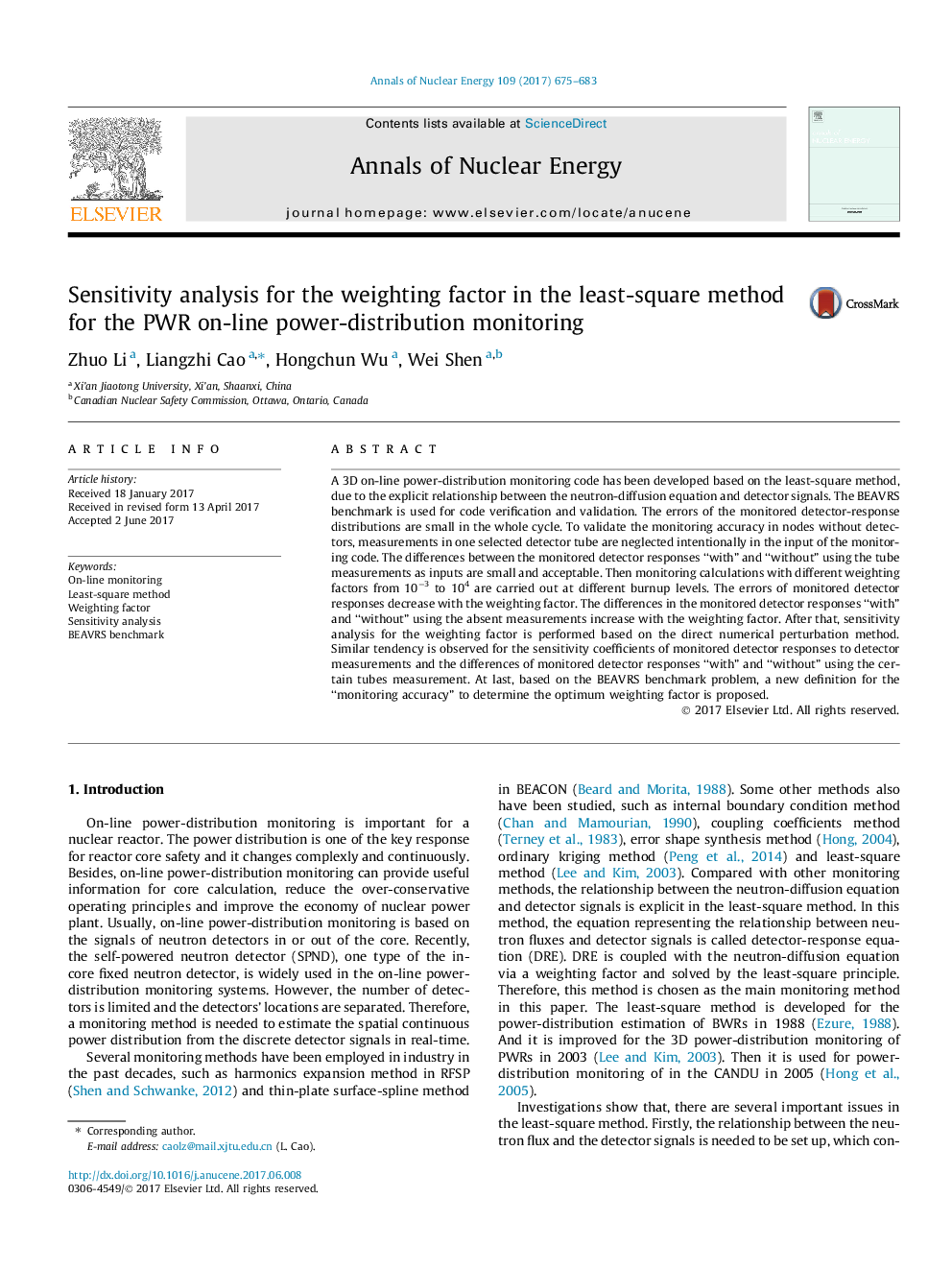| Article ID | Journal | Published Year | Pages | File Type |
|---|---|---|---|---|
| 5475089 | Annals of Nuclear Energy | 2017 | 9 Pages |
Abstract
A 3D on-line power-distribution monitoring code has been developed based on the least-square method, due to the explicit relationship between the neutron-diffusion equation and detector signals. The BEAVRS benchmark is used for code verification and validation. The errors of the monitored detector-response distributions are small in the whole cycle. To validate the monitoring accuracy in nodes without detectors, measurements in one selected detector tube are neglected intentionally in the input of the monitoring code. The differences between the monitored detector responses “with” and “without” using the tube measurements as inputs are small and acceptable. Then monitoring calculations with different weighting factors from 10â3 to 104 are carried out at different burnup levels. The errors of monitored detector responses decrease with the weighting factor. The differences in the monitored detector responses “with” and “without” using the absent measurements increase with the weighting factor. After that, sensitivity analysis for the weighting factor is performed based on the direct numerical perturbation method. Similar tendency is observed for the sensitivity coefficients of monitored detector responses to detector measurements and the differences of monitored detector responses “with” and “without” using the certain tubes measurement. At last, based on the BEAVRS benchmark problem, a new definition for the “monitoring accuracy” to determine the optimum weighting factor is proposed.
Related Topics
Physical Sciences and Engineering
Energy
Energy Engineering and Power Technology
Authors
Zhuo Li, Liangzhi Cao, Hongchun Wu, Wei Shen,
